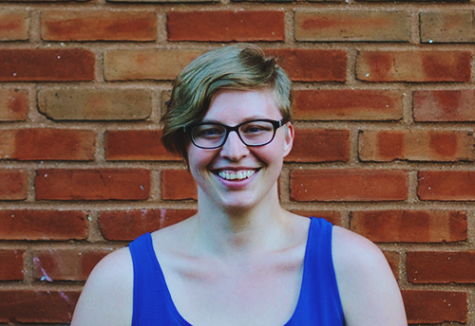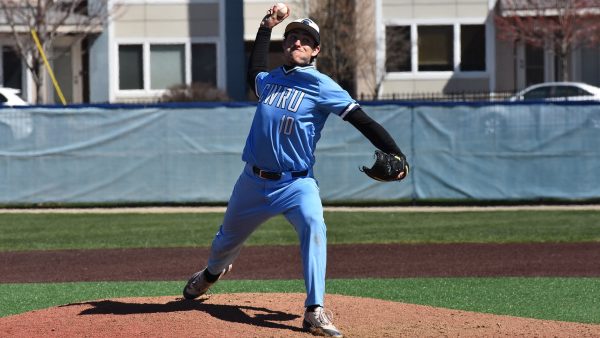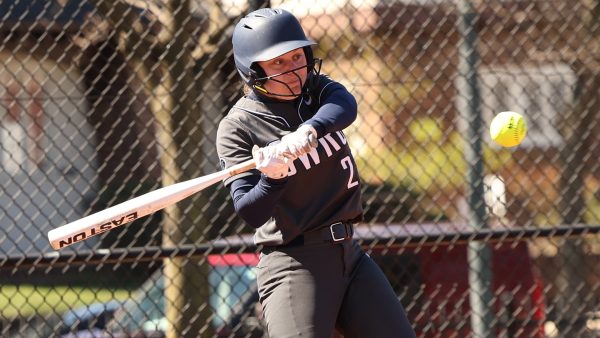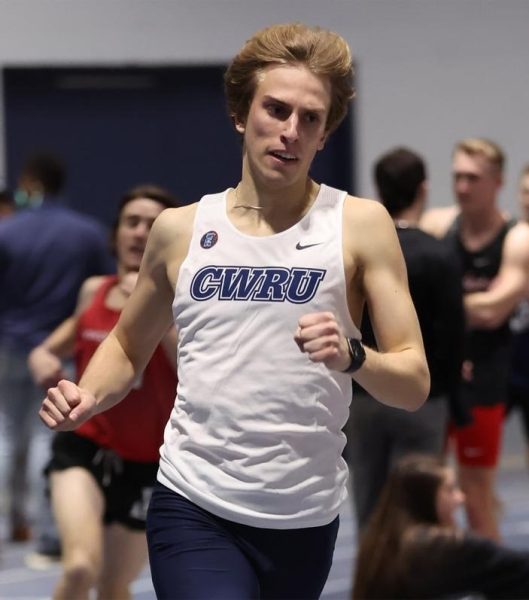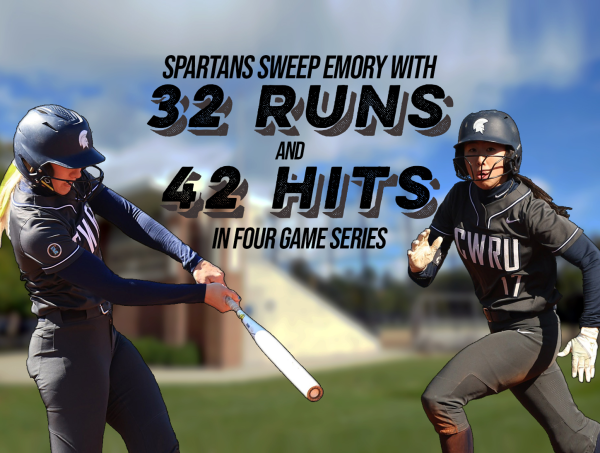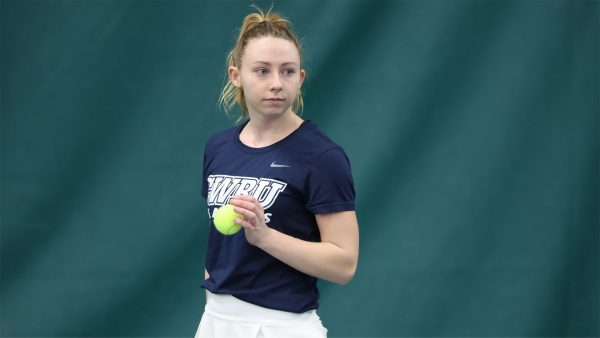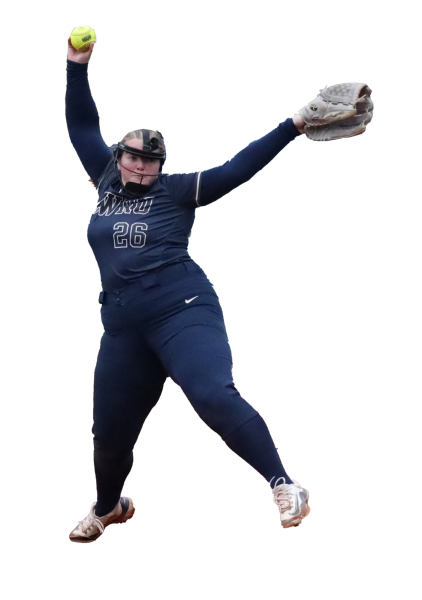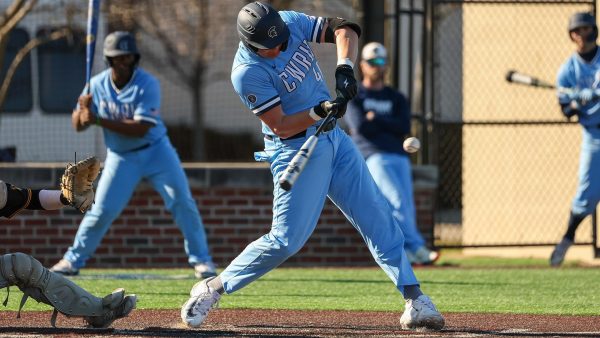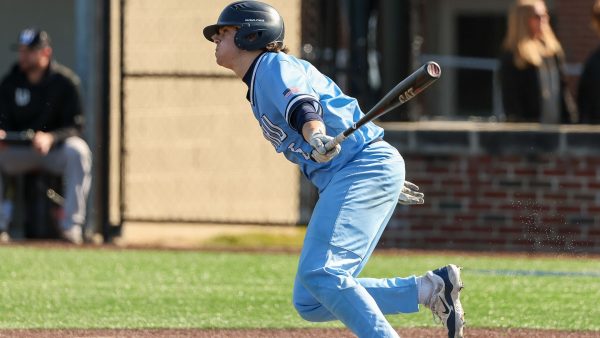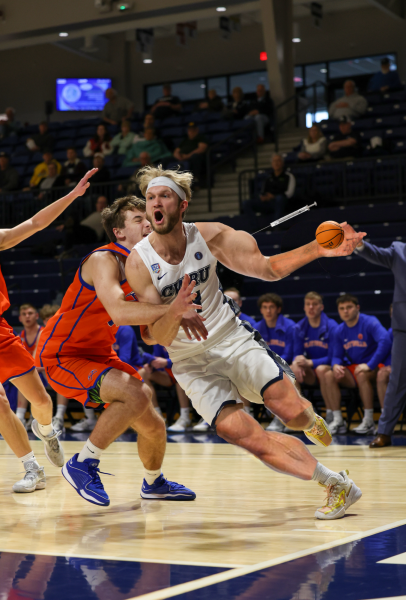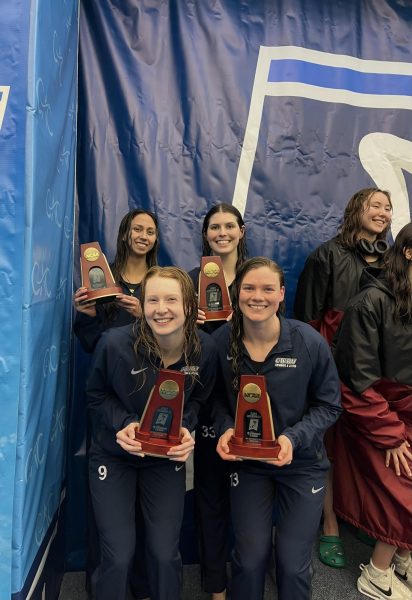A powerful pairing
Spartan leaders on the court, best friends off
April 25, 2014
Case Western Reserve University tennis player Taylor Sweeney has always been on her friend Michelle Djohan’s side.
“Okay so the summer going into senior year, I went to a match and my sister was playing next to Michelle (before I knew who she was),” explains Sweeney, “This girl was cheating her so bad. So me and my whole family were just cheering for her and rooting for her the whole time. She gets off the court and I walk up to her and just say, ‘we were cheering for you…I’m really sorry’ and she says thanks or whatever.”
Fast forward two years and Djohan and Sweeney are a couple of weeks into their first college season.
“I look over and she’s playing a couple of courts away from me and I’m like, ‘Oh my gosh, she hits just like that girl,’” Sweeney said.
Sure enough, Djohan remembered the exchange and it was the beginning of a fast friendship between the nutritional biochemistry and metabolism major and Sweeney, an accounting major.
The two have gone from being teammates and friends off the court to being paired up in doubles tennis this year where they have won 11 of 14 matches this season. This year was the first in which the two have been playing together consistently. Head coach Kirsten Gambrell saw their easy teamwork early in the season and thought they would make a good partnership.
“She says she can always count on us chemistry-wise to get along and be fine,” said Djohan, “We’re such good friends off the court that we always find a way on the court.”
The two sophomores also have complementary playing styles with Sweeney typically taking care of the backcourt while Djohan protects the net. Djohan is also a more experienced doubles player and provides enthusiasm for the style of play to compensate for the more conservative Sweeney in these fast-paced matches. As opposed to singles competition, a doubles match is over when a team wins eight games, which usually takes about an hour. It is critical for the team to start out strong and stay focused, a skill Djohan has brought to the partnership. Sweeney provides more support for the team, ensuring that shots are set up properly and helping with her teammate’s singles strategy.
As well as filling in each other’s weaknesses in serving and returns, the ladies also provide critical emotional and mental support to each other during matches.
“I get nervous, like that’s my thing,” said Sweeney. “So Michelle’s always, like, take your time…breathe…just go really slow so you can just focus in.”
It also helps that the friends always can trust that the other will put forward maximum effort.
“The outcome doesn’t matter as long as we try our hardest,” said Djohan.
Sweeney can easily recall a specific instance where she wasn’t playing her best, but knowing that she would be supported helped her get past the experience.
“One of our losses we were on spring break and I just had a breakdown. I couldn’t tell you exactly what happened but I just couldn’t make a ball on the court and even though it was frustrating for ‘Chelle, afterwards she was talking to me and I knew she had to be irate, but I was like ‘Thanks for not yelling at me,’” said Sweeney. “It’s easier when you know that person won’t hold a grudge against you because they know you’re giving 200 percent effort and, even if you’re playing like crap, it’s all you can ask from your partner.”
It’s hard to imagine a pair of friends being more in sync. When they play together, they are constantly communicating and collaborating. Their first ever doubles match together actually occurred early in their freshman year when the two were paired up to take on the best doubles team their opponent put forward. The ladies put up six points on the tough opponent and started to understand how their styles could complement each other. So far this year, the pair have only lost three doubles matches and consistently shine against highly-ranked opposition.
They seem to think on the same wavelength off the court as well, often finishing each other’s thoughts or working together to tell stories. It’s no surprise that these two have found mutual respect and trust in each other as they both share the same general background regarding tennis and their early feelings on the sport.
As with many sports, parental guidance usually provides initial motivation for children to start getting involved in tennis. But unlike soccer or volleyball, the pursuit of success in this sport can be isolating and difficult. Both Sweeney and Djohan described early years of playing as a “love-hate relationship.” A person’s identity can become so wrapped up in tennis that, despite the intense training and lack of peer involvement, it becomes hard to throw all of the hard work she’s put in aside.
While playing tennis in a community before reaching the college level, a player’s network of like-minded peers is small.
“At first you don’t realize how isolated your tennis world is,” said Djohan. “But now we travel to different states. We’re nationally ranked. It’s just this huge network that you didn’t see before.”
The Case women’s team is currently 14 members strong. The sense of camaraderie among the athletes is clear as you witness them cheering each other on throughout matches or walking together through the quad. The sophomores on the team are an especially tight bunch who frequently commiserate over the long road trips following brutal exams or lab sessions.
Djohan and Sweeney value their friendship together through the team in large part because they know that it would be difficult to maintain a friendship otherwise.
“It’s interesting that Michelle’s going to be a doctor one day and I’m going to be an accountant but right now she’s my best friend Michelle and we’re 20,” said Sweeney.
Playing alongside a fellow student can help form the lasting bonds that many people expect to leave their university experience with, but few achieve.
Sweeney and Djohan have already proven that you never know who you’ll see again down the road. “It’s so weird because you just get so interconnected with people,” said Sweeney.
“A girl who lived hours away from me… we end up going to the same school, playing together and being best friends.”
Djohan laughed, “What are the odds of that?”










